Loading page header ... or Your browser does not support JavaScript
Back to "Swift" Main page <> Next Building the 'Swift':The "'Swift'" is a 15' plywood double chine dinghy. She is constructed using the stitch and glue (or tack and tape) method without the use of an upside-down internal framework of bulkheads, chines and keelson to build over. Instead, the complete port/starboard hull panels are made up on the bench prior to assembly, which takes place in a simple cradle. This is possible as nearly a third of the hull in the bow section forms an uninterrupted panel. From there on the bottom and two topsides diverge from the 'joined-up' forebody and form the chines. The inwales (inner gunwale), seat top stringers and floor stiffeners are glued on to the panels while on the bench. |
|
|
In the first picture you see the construction cradle, which is made from particle (chip-) board. These boards are second hand material. Anything structurally sound will do. In the background (right) are the hull panels already joined up loosely with wire ties along the keel and stem; ready for placement in the cradle. |
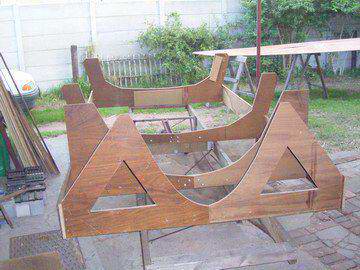 |
The next picture shows the two hull panels standing vertically in the cradle. To keep the panels from flopping about, even for transport to the cradle, they are clamped together with two pieces of light lumber. A set of small blocks with light lines leading to the four topside panels and one to the top of the bow are used for control during the opening up. The following pictures, below, show the panels as they unfold fully to the shape of the boat, after taking the lumber bracing off. |
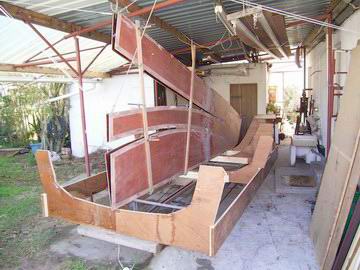 |
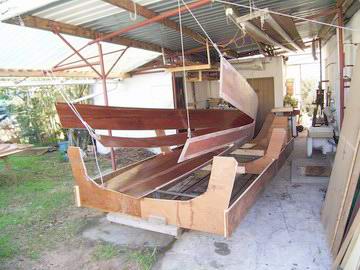
|
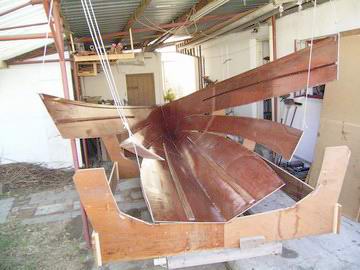 |
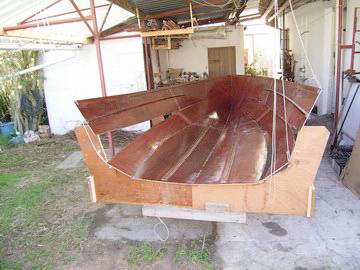
|
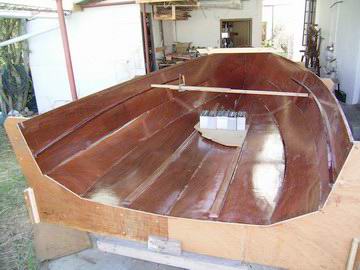 |
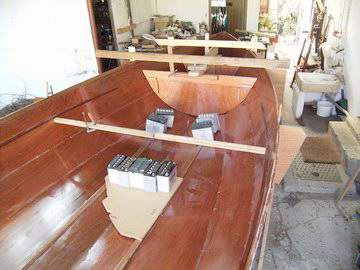
|
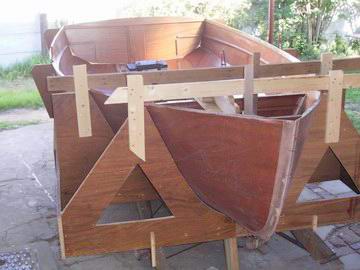 |
| Some weights, the two permanent bulkheads and a spreader at midships are used in the process. Wire ties are added progressively to the chines. The transom is fitted last. The boat will be completed by glassing the chines, stem/keel and transom, after which the bulkheads, centerboard case and buoyancy/seats and foredeck are fitted. Last the outer gunwale will be fitted before turning over and glassing the outside joints. |
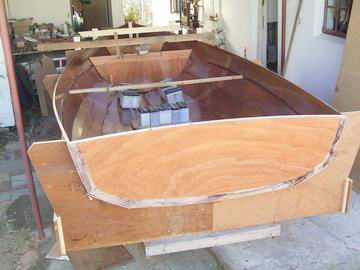 |
Top of Page
Loading first page footer ... or Your browser does not support JavaScript
Loading second page footer ... or Your browser does not support JavaScript